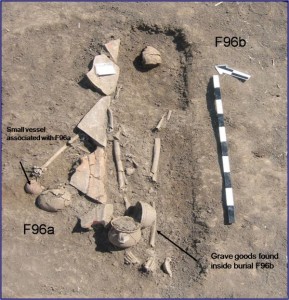 Mitochondrial DNA testing performed on a tooth from a 2000 year-old skeleton unearthed in a cemetery in Southern Italy has returned surprising results: East Asian ancestry. From Oxygen isotope tests we do know that he was not born in Italy, but we don’t know whether he himself was born in East Asia or whether he was descended from East Asians on his mother’s side.
Mitochondrial DNA testing performed on a tooth from a 2000 year-old skeleton unearthed in a cemetery in Southern Italy has returned surprising results: East Asian ancestry. From Oxygen isotope tests we do know that he was not born in Italy, but we don’t know whether he himself was born in East Asia or whether he was descended from East Asians on his mother’s side.
Rome at the time had no direct contacts with the Far East, although East Asian goods like silk and spices did get to the Empire via trading routes in the Near East. This the first hard evidence we have of East Asians living in the heart of the Roman Empire.
According to Tracy Prowse, assistant professor of Anthropology, and the lead author on the study, the isotopic evidence indicates that about 20% of the sample analyzed to-date was not born in the area around Vagnari. The mtDNA is another line of evidence that indicates at least one individual was of East Asian descent.
“These preliminary isotopic and mtDNA data provide tantalizing evidence that some of the people who lived and died at Vagnari were foreigners, and that they may have come to Vagnari from beyond the borders of the Roman Empire,” says Prowse. “This research addresses broader issues relating to globalization, human mobility, identity, and diversity in Roman Italy.”
He was certainly no Magus from the East bearing riches. He was buried with only one pot and it’s a local piece. There’s nothing in the pot that suggests its owner was East Asian, so the isotopic and mitochondrial DNA analysis are the only indicators of this remarkable anomaly.
Somebody else — somebody with more and fancier grave goods — was even buried on top of him later.
“This multi-faceted research demonstrates that human skeletal remains can provide another layer of evidence in conjunction with archaeological and historical information,” says Prowse.
The cemetery is in the settlement of Vagnari in Puglia. The area was populated from 4 B.C. onwards, but in the 1st century A.D. it became personal property of the Roman Emperor run by a resident administrator. Vagnari was an industrial site, used for making tile and smelting iron. Its workers were both craftsmen and slaves. We don’t know which one our East Asian friend was.